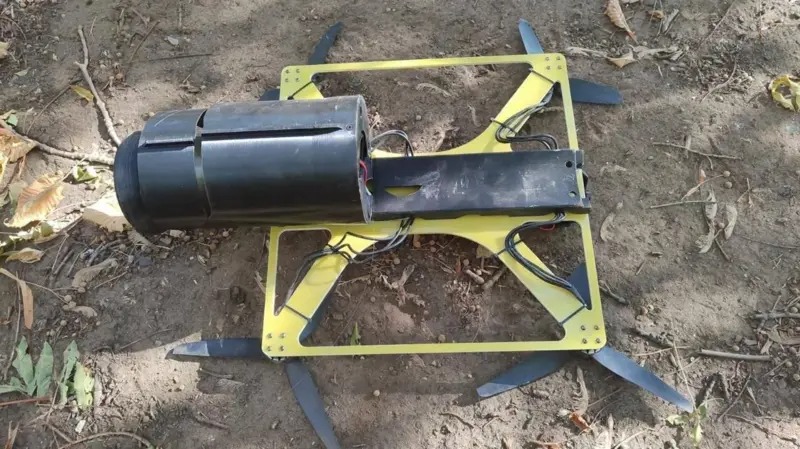Russia has achieved a significant tactical advantage by deploying fiber optic-controlled drones in its war against Ukraine, BBC Ukraine reports. These FPV (first-person-view) unmanned aerial vehicles (UAVs), which are nearly impossible to neutralize using traditional electronic warfare methods, began appearing on the battlefield in late summer 2024.
According to Russian sources cited by BBC Ukraine, the drone known as “Prince Vandal of Novgorod,” manufactured by the Ushkuynik Scientific and Industrial Center in Russia’s Novgorod, was first used in combat on 13 August 2024 in Kursk Oblast.
The head of the manufacturing company, Alexey Chadaev, told TASS that the technology is “revolutionary,” claiming that after “almost a 1,000 uses” there are only “one or two breaks per 10 launches.”
The drones operate using fiber optic cables instead of radio waves for control, making them immune to electronic warfare countermeasures. The only way to interrupt such communication is by physically damaging the optical fiber cable.
Guidance by wire is not an entirely new idea. The wire-guided anti-rank missiles, such as the American TOW and Ukrainian Stuhna-P, have been used for many years.
BBC Ukraine reports that Ukrainian engineers had developed similar technology earlier but faced rejection from military leadership. Maksym Sheremet, head of the Dronarnya laboratory, told BBC Ukraine:
“The first such drone was developed by us a year and a half ago!” he said, adding that military leadership had dismissed the technology as “not relevant.”
Sergey Bezkrestnov, a Ukrainian military radio technology consultant, confirmed to BBC Ukraine that Ukrainian developers first demonstrated fiber optic flights to the military in 2022, but the solution generated no interest then.

The high cost of fiber optics, with a 10 km spool priced around $3,000 at the time – nearly ten times more than a standard FPV quadcopter – was a major reason the Ukrainian General Staff initially deemed fiber-optic drones “impractical,” according to Sheremet.
According to BBC Ukraine, experts are currently exploring various countermeasures, including visual detection systems, ultrasonic or infrared sensors, and acoustic sensors. Physical countermeasures such as net launchers, shotguns with buckshot, and specialized netting above positions are also being considered.
Sheremet warned that a revolutionary breakthrough in the use of such technology on the battlefield could occur next year, similar to how FPV drones, initially not taken seriously, became a primary weapon used by both sides in millions of units during 2022-23.
Related:
- Russian recon drones start performing evasive maneuvers to avoid Ukrainian FPV interceptors
- Ukrainian tech firm launches affordable thermal cameras for military drones
- Does Russia face military collapse by 2026? Inside Ukraine’s strategic assessment
- Cost-effective steel-screen Ukrainian solution outperforms Russian “turtle” tank protection
- Ukraine tests advanced auto-targeting system for FPV drones
- Ukraine continues efforts to degrade Russian air defense capabilities, destroying Russia’s BUK and Tor systems (video)
- Russians add rear-view cameras to drones to counter Ukrainian FPV threats
- Ukraine begins using FPV drones with post-target-lock autonomous homing




